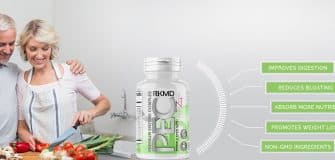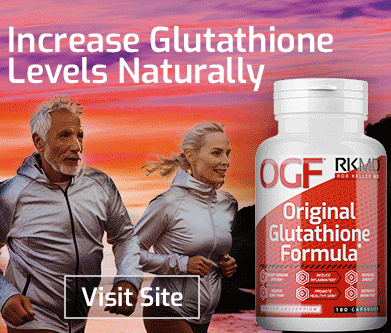Commonly Used Food Preservatives May Be Linked to Increased Health Risks
Commercial foods have come a long way in the past twenty years, as industrial manufacturing of consumer products like processed meat, bread, beverages and convenience foods have extended the shelf life of products we buy every day.
Take bread for instance. If you grew up eating fresh bread baked at home, then you know the average shelf life for scratch bread is approximately 3-5 days. But if you check a loaf of white or whole wheat bread at the supermarket, you are likely to see a shelf life of two to three weeks, indicated by the production and expiration date.
How is it possible to extend the shelf life and inhibit the natural development of mold on bread? That’s where food preservatives come in. And while consumers have an expectation to purchase products that will last a week or longer when they bring it home from the grocery store, there is a cost to our health when we choose foods that have artificial preservatives.
In this article, we’ll take a look at some common and popular convenience foods that have above average levels of artificial preservatives, and share some of the clinical studies that have linked specific commercial food preservatives to increased health risks.
What Types of Chemical Preservatives Are Permitted in American Food Products?
In the United States, there are more than 1,000 artificial food coloring and preservative chemicals that are regulated and approved for use for consumer food products.
Under the Food and Drug Administration (FDA) Food Additives Amendment, two groups of ingredients were exempted from the regulatory governance.
Group 1: Prior Sanctioned Substances
This refers to chemical additives and food coloring that were determined to be safe for food production use prior to 1958. This group includes sodium nitrite and potassium nitrites that are still used today to preserve processed meat products.
Group 2: GRAS (Generally Recognized as Safe)
This second group of exempted additives and chemicals uses for food manufacturing, are “generally recognized as safe” because they have been historically used in food processing with limited health impacts, according to clinical studies. There are several hundred GRAS substances on the list, including salt, sugar, certain spices, vitamins and MSG.
One thing for consumers to be aware of, is that the loosely held term “generally recognized as safe” is ambiguous at best. It does not warrant that there are no potential side-effects or health risks for these preservatives and additives; it only implies that there is a reasonable level of safety that is acceptable to food regulators.
What Foods Are High in Artificial Preservatives?
According to Food Matters® the average American household spends up to 90% of their monthly grocery budget on foods that are high in artificial additives and preservatives. And while consumer awareness regarding nitrates in processed meats has improved significantly in the past ten years, there are many different types of foods that are high in artificial preservatives that still find their way to our plates every day. Whether dining out or cooking at home.
How we shop for food in our grocery store, and the expectation that we have as consumers for food to appear fresh and have a longer than normal shelf life, have led food manufacturers to increase the amount of artificial preservatives used.
The complex distribution chain of convenience and fresh foods has altered the quality of food we eat. While lengthening the shelf life and extending the expiration date of certain types of food, the use of artificial preservatives also significantly lowered nutritional values, while increasing health risks from carcinogenic preservatives.
Here are some of the most commonly used artificial preservatives in popular consumer foods we buy every week:
- Astaxanthin in Farm-Raised Salmon
Did you know that the majority of fresh salmon products in the seafood section are farmed? Many sources we reviewed stated that approximately 90% of ‘fresh’ salmon sold comes from fish farms. One of the differences between factory farmed salmon and fresh (free swimming) salmon, is the color. Farmed salmon is fed a diet which does not include crustaceans (rich in natural astaxanthin), and the appealing rose pink color of wild salmon is only achieved through their natural diet.
Since consumers would be unlikely to purchase salmon that appeared pale in color (and according to studies, pay more for fish that has a darker pink flesh) farmers add astaxanthin to the dry feed for the fish. Astaxanthin supplements for farm raised salmon can be sourced from crustaceans, but the most affordable pigmenting additive for the fish is derived from petroleum products like coal tar.
- Monosodium Glutamate (MSG – E621)
Consumer awareness about MSG (monosodium glutamate) has improved with regards to dining out at fast-food restaurants. The so called “Chinese Restaurant Syndrome” named for the prevalence of MSG in fast-casual restaurants led many businesses to become transparent about the exclusion of MSG in their menu items to assure consumers about reduced health risks.
Monosodium Glutamate is an amino acid that commercial manufacturers used to enhance the flavor of certain types of long-shelf life foods like canned soups, salad dressing, dried snacks like potato chips and popcorn. But MSG is still found in sometimes very high concentrations in other foods you might not suspect, such as restaurant food and frozen convenience meals and entrees.
What is the ‘big deal’ about MSG? Many clinical studies have demonstrated that the regular dietary consumption of the additive and preservative can cause adverse side effects, including fatigue, headaches, depression and eye damage. Many nutritional scientists propose that the impact of MSG on neurological pathways in the brain essentially shut down the signal of food satisfaction. It impairs our ability to “feel full” which can contribute to over eating.
- Sodium Sulfite – E221
This artificial food additive was predominantly used in fresh produce and meats, to help retain an appealing color that would indicate “freshness” to consumers in the grocery store. However, in 1986 after an increase in documented health issues, the FDA restricted the use of E221 but only for foods that contain vitamin B1. The reason was that sodium sulfite negated any health benefit of vitamin B1. None
Food producers are required by law to indicate the presence of sulfites, but only when the volume of the chemical is greater than 10 parts per million. Clinical studies suggest a link between sodium sulfite and asthma, rashes, headaches and other respiratory issues, particularly for 1 in 100 people who have an immunological sensitivity to the chemical.
A 1985 paper in the “Canadian Medical Association Journal” also reports that deaths in both Canada and the United States that were linked with sulfite exposure. Sodium Sulfite can be found in wine, cut potatoes (such as frozen French fries), processed foods and even some health foods including trail mix and dried fruit.
- BHA and BHT – E320
From potato chips to dried cereals, vegetable oils, enriched rice, shortening and lard to popular candy brands and even gelatin (jello) products, BHA and BHT are a common food preservative that prevents color and flavor changes, and spoilage.
When we talk about free radicals from dietary sources, BHA and BHT have been clinically studied and some reports have linked the carcinogenic additive to increased risk of certain types of cancer. Both BHA and BHT are oxidants the form reactive cancer-causing compounds in the body.
- Sodium Nitrate and Sodium Nitrite
While we’d like to think that it’s just economy grade hot dogs that we need to avoid, to reduce our consumption of Sodium Nitrate and Sodium Nitrite, the two artificial preservatives find their way into a large volume grocery store food items, including:
- Bacon
- Lunch meats
- Smoked fish
- Frozen hamburgers
The USDA tried to ban both additives in the early 1970’s but they were stopped and vetoed by lobbyists from the food manufacturing sector, who argued that they had no other alternatives to produce packaged meats and ensure food ‘safety’ against spoilage and the growth of harmful microbes.
When Sodium Nitrate and Sodium Nitrites are consumed, they become highly carcinogenic in the human digestive tract, forming nitrosamine compounds that are carried through the blood which can have a negative impact on the liver and pancreas.
Making Healthy Choices at the Grocery Store
The good news is that with increased awareness of the potential health hazards of artificial preservatives, more food manufacturers are developing ‘preservative free’ fresh food alternatives. Reduce your spending on convenience foods and focus on traditional food preparation methods, using unpreserved natural and fresh foods, and choose organic fresh foods and meats whenever possible.
Our busy lifestyles mean an increased reliance on convenience and fast-foods, but the healthiest choice is to prepare meals at home whenever possible, from scratch. The lower cost and convenience of prepackaged and preserved foods have an impact on our health and making the extra effort to ‘dine in’ can have a positive impact on health, improve energy, and reduce cancer and other health risks. How to find the best nutritional bargains at the grocery store.



















